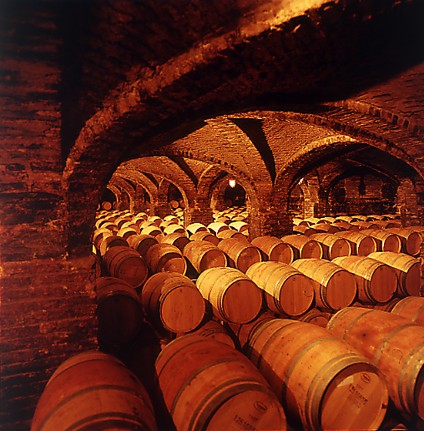Last winter was cold and rainy in Chile's wine country.

Rainfall was almost double the normal amount as evidence by figures for the Maipo Valley where the average annual rainfall of 300 millimetres hit 600 mm in the winter of 2002 and those numbers could be observed in most all producing areas.
Spring was cool and it arrived late with bud-burst delayed from 7 to 12 days. With so much water in the ground the vines started fast and exhibited a lot of vigour.
Fortunately the weather was dry and temperatures increased in November (during bloom) allowing an almost complete set for the cabernet sauvignon, cabernet franc and sauvignon blanc but incomplete for carmenère and chardonnay suffering from millerandage -- or an abnormal fruit set leading to the joint presence of large and small grapes.
The long, dry, cool bloom period produced pea-size berries and the vines, under moderate stress, produced medium size berries and bunches.
The summer of '03 was very dry except for a little rain in February. Temperatures jumped dramatically at the end of December and January (over 30°C) but it never rose above 38°C as was the case in 2002; veraison was 10-15 days past normal.
February temperatures remained high but by mid-month night-time temperatures were falling substantially, extending the growing season and further concentrating the flavours on the vine.
Valley Reports:
Casablanca
Casablanca was hotter than normal and foggy mornings were the usual from February through to picking time.
Sauvignon Blanc: the ripening came fast (for the first time ever in the middle of February) or about two weeks early. There's uneven ripening of berries per bunch. It shows good concentration, nice fruit and flavours, soft skin and even with a total acidity that is higher than a normal year, good balance. Yields were 3.5 to 6.0 tons per hectare.
Chardonnay: It was a normal year with yields 5.5 to 7.0 tons per hectare. The grapes boast ripe fruit, fine concentration, soft skin and good balance.
Merlot: It looks goods (but it's still ripening) with fine intensity and color, good concentration and balance. It will take few more days to get complete ripening.
Maipo
Since the middle of March the nights have been cold and foggy and the fog has persisted well into the morning.
Cabernet Sauvignon and Franc: The fruit has good colour and intensity, soft tannins with fine concentration and balance. The yield is 30 to 50 per cent lower than normal.
Merlot: The merlot had difficulty completing veraison but low yield vineyards (5 to 6 ton/ha) are showing fine colour intensity, good fruit, balance and soft tannin.
Carmenère: is still unripe, a little herbaceous yet.
Colchagua Valley
Cabernet and Merlot: Quality in Colchagua will depend upon yield and soil. In general the '03s were difficult to ripen. Some vineyards show low color and the ripening seem to be blocked. Merlot was more difficult than Cabernet. Areas where the fruit is ripe (Apalta) showed excellent fruit intensity, soft skin and balance. The yield is 15 to 20 per cent lower.
Lontué Valley
Sauvignon Blanc: Fine fruit character and balance but not as concentrated as in Casablanca.
Merlot and Cabernet: the reds are still unripe. It will take a couple of weeks to complete the ripening process. The vineyards were not irrigated until late in the season to invoke moderate water stress to help control vigour.

 quicksearch
quicksearch





